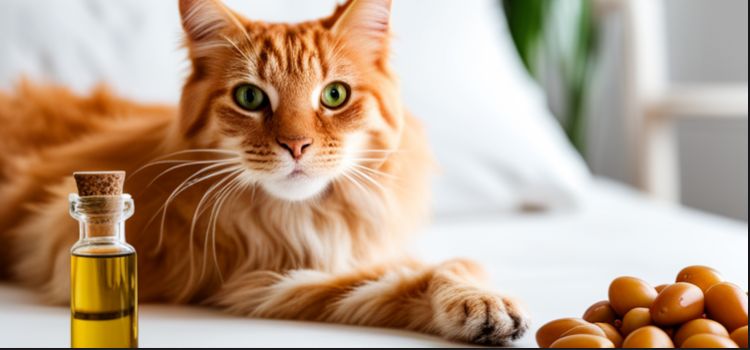As an Amazon Associate committed to the mission of improving the lives of our readers, Live-Clear.com receives a small commission from eligible purchases made through our affiliate links. This revenue enables us to keep producing insightful articles and other material.
No, you should not use Bactine on cats. It contains ingredients that may be harmful to them.
Cats’ skin and physiology differ significantly from humans and other animals. Using human medications, like Bactine, on cats can lead to adverse reactions. Bactine contains lidocaine and benzalkonium chloride, which are not safe for feline use. Cats may ingest these chemicals during grooming, leading to potential toxicity.
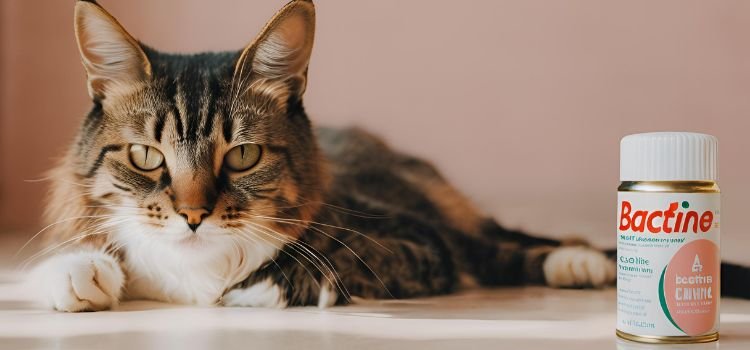
Always consult a veterinarian before applying any product to a cat’s wounds or skin. Safe alternatives specifically designed for cats are available. Proper wound care and veterinary advice ensure your cat’s health and safety. Taking these precautions helps prevent complications and promotes quick recovery for your feline friend.
What Is Bactine
Bactine is a popular antiseptic solution used to clean and disinfect wounds. Many pet owners wonder if it’s safe for their cats. Understanding what Bactine is can help you decide if it’s suitable for your feline friend.
What Is Bactine?
Bactine is an over-the-counter antiseptic spray or liquid. It contains two main ingredients: benzalkonium chloride and lidocaine. Benzalkonium chloride is an antiseptic that kills bacteria, while lidocaine is a local anesthetic that numbs the skin.
Bactine is commonly used to clean minor cuts, scrapes, and burns. It helps prevent infection and reduces pain at the wound site. People often use it for quick and easy first aid care.
Here are the key components of Bactine:
| Component | Function |
|---|---|
| Benzalkonium Chloride | Kills bacteria and prevents infection |
| Lidocaine | Provides pain relief by numbing the skin |
Many people use Bactine because it’s easy to apply and works quickly. The spray form is convenient, especially for hard-to-reach areas. The liquid form can be applied with a cotton ball or pad.
While Bactine is great for humans, its safety for cats is not well-documented. Cats have different skin and physiology, making it crucial to consult your vet before using any human medication on them.
Can Bactine Be Used On Cats
Pet owners often wonder about the safety of various products for their furry friends. One common question is, “Can you use Bactine on cats?” Bactine is a popular antiseptic for humans, but its use on cats requires careful consideration. Understanding the risks and alternatives can help you make an informed decision.
Understanding The Risks
Using Bactine on cats is not recommended due to several risks. Cats have different skin sensitivities compared to humans. Bactine contains ingredients that may be harmful to your feline friend. Here are some key risks:
- Skin Irritation: Bactine might cause irritation or allergic reactions on a cat’s sensitive skin.
- Ingestion Hazard: Cats tend to lick their wounds. Ingesting Bactine can lead to digestive issues or poisoning.
- Respiratory Problems: Some chemicals in Bactine can cause respiratory distress if inhaled by your cat.
Consulting with a veterinarian before using any human medication on pets is crucial. The vet can provide safer alternatives or treatments specifically designed for cats.
Factors To Consider
Before using any product on your cat, consider these important factors:
- Cat’s Health: Assess your cat’s overall health. Cats with pre-existing conditions may be more vulnerable to adverse reactions.
- Severity of Wound: Evaluate the wound’s severity. Minor cuts might not require antiseptics, while serious injuries need professional care.
- Ingredients: Always check the product’s ingredients. Avoid products with alcohol, phenol, or other toxic substances.
- Veterinarian Advice: Seek advice from a vet. They can recommend safe and effective treatments tailored for your cat.
Understanding these factors ensures your cat’s safety and well-being. Making informed decisions helps prevent potential health risks.
Possible Alternatives
There are safer alternatives to Bactine for treating your cat’s wounds. Consider these options:
- Veterinary Antiseptics: Products like Betadine or Chlorhexidine are safe for cats and effective in cleaning wounds.
- Natural Remedies: Aloe vera gel or diluted honey can be soothing and have mild antiseptic properties.
- Prescription Ointments: Your vet may prescribe ointments specifically formulated for cats.
- Saline Solution: Saline solution is gentle and can clean minor wounds without causing irritation.
Using appropriate alternatives ensures your cat’s safety and promotes healing. Always prioritize products designed for pets to avoid unnecessary risks.
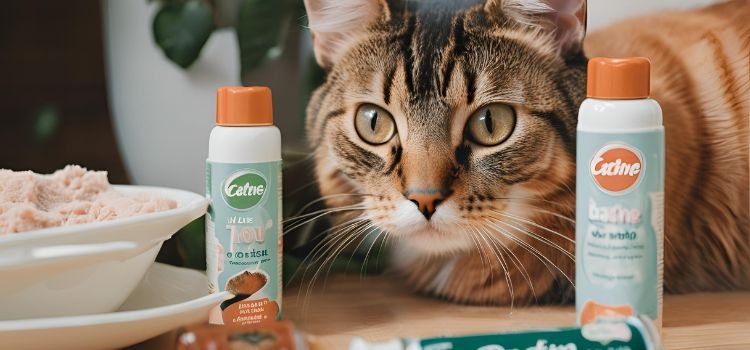
When To Use Bactine On Cats
Using Bactine on cats can be helpful in specific situations. Knowing when to use it ensures the safety and well-being of your feline friend. This guide will cover different scenarios where Bactine can be beneficial for cats.
Treating Minor Cuts And Wounds
Minor cuts and wounds are common in cats, especially those who love to explore. Using Bactine can help prevent infection and speed up healing. Ensure the wound is clean before applying Bactine. Follow these steps:
- Clean the wound with warm water and a soft cloth.
- Pat the area dry with a clean towel.
- Apply a small amount of Bactine to the wound.
- Monitor the wound daily for signs of infection, such as redness or swelling.
Keep the following points in mind:
| Tips | Details |
|---|---|
| Use a Cotton Ball | Apply Bactine using a cotton ball for better control. |
| Avoid Licking | Prevent your cat from licking the wound by using an e-collar. |
Dealing With Insect Bites And Stings
Cats often get insect bites and stings, which can cause discomfort. Bactine can provide relief and prevent infection. Here’s how to use it for insect bites and stings:
- Identify the bite or sting area.
- Clean the area gently with warm water.
- Apply Bactine to the affected area.
- Observe your cat for signs of allergic reactions, such as swelling or difficulty breathing.
Important considerations:
- Use a small amount: Only a small amount of Bactine is needed.
- Monitor for reactions: Watch for any adverse reactions after application.
- Seek vet advice: Contact your vet if the bite or sting looks severe.
Managing Skin Irritations
Skin irritations in cats can result from various factors, including allergies or dermatitis. Bactine can help soothe irritated skin. Follow these steps:
- Identify the irritated skin area.
- Clean the area with a mild, pet-safe cleanser.
- Gently pat the area dry.
- Apply a thin layer of Bactine.
Key points to remember:
- Use sparingly: Only apply a thin layer to the irritated area.
- Observe your cat: Watch for any signs of increased irritation or allergic reactions.
- Consult a vet: If the irritation persists, seek veterinary advice.
By following these guidelines, you can effectively use Bactine to manage your cat’s minor health issues. Always consult your veterinarian for severe conditions or if you are unsure about the treatment.

How To Use Bactine On Cats
Using Bactine on cats can help treat minor cuts and scrapes. Bactine is an antiseptic that helps prevent infections. But, it’s essential to use it correctly to keep your cat safe. This guide will show you how to use Bactine on cats effectively.
Preparing The Area
Before applying Bactine, make sure the area is clean. Dirt and debris can cause infections. Follow these steps to prepare the area:
- Wash your hands: Always start with clean hands to avoid introducing germs.
- Trim fur around the wound: Use blunt-tipped scissors to trim fur. This helps you see the wound clearly.
- Rinse with water: Gently rinse the wound with lukewarm water. Avoid using soap as it can irritate the skin.
- Pat dry: Use a clean towel to pat the area dry. Do not rub as this can cause more damage.
Here’s a quick reference table:
| Step | Description |
|---|---|
| 1 | Wash your hands |
| 2 | Trim fur around the wound |
| 3 | Rinse with lukewarm water |
| 4 | Pat dry with a clean towel |
Applying Bactine
After preparing the area, it’s time to apply Bactine. Follow these steps carefully:
- Shake the bottle: Make sure the solution is well-mixed.
- Apply a small amount: Spray Bactine directly onto the wound. Use a cotton ball if you prefer.
- Be gentle: Ensure you cover the entire wound without causing discomfort.
- Let it dry: Allow the area to air dry. Do not cover the wound unless necessary.
Consider these tips:
- Do not overuse: Apply Bactine only once or twice daily.
- Check the expiration date: Always use fresh Bactine.
- Consult your vet: If unsure, ask your vet before using Bactine.
Monitoring Your Cat’s Reaction
After applying Bactine, watch your cat closely. Observe for any adverse reactions. Here’s what to look for:
- Signs of irritation: Redness, swelling, or increased discomfort are red flags.
- Behavioral changes: Increased licking of the area or signs of pain.
- Allergic reactions: Watch for hives, itching, or difficulty breathing.
If you notice any negative reactions, stop using Bactine immediately. Contact your vet for advice. Here are some steps to take if you observe an adverse reaction:
- Rinse the area: Use lukewarm water to rinse off the Bactine.
- Keep the cat calm: Try to keep your cat relaxed and comfortable.
- Call the vet: Seek professional advice as soon as possible.
Monitoring your cat ensures their safety and helps prevent complications.
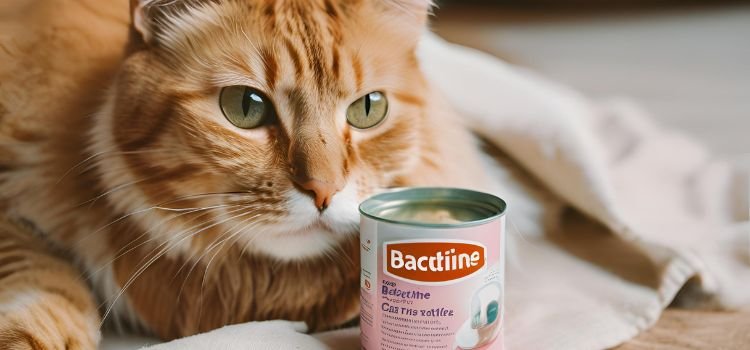
Potential Side Effects
Using Bactine on cats can be risky. Potential side effects may occur, and understanding these risks is crucial. This section delves into the possible allergic reactions, toxicity concerns, and the importance of seeking veterinary care.
Allergic Reactions
Cats can have allergic reactions to Bactine. Symptoms of an allergic reaction include:
- Swelling
- Redness
- Itching
- Hives
These signs indicate your cat’s body is reacting negatively. Severe allergic reactions might lead to:
- Difficulty breathing
- Vomiting
- Diarrhea
Monitoring your cat after applying Bactine is essential. If you notice any symptoms, contact your vet immediately.
Some cats might be more sensitive to the ingredients in Bactine. Benzalkonium chloride, a common ingredient, can cause irritation. Always do a patch test on a small area before full application. This helps identify any adverse reactions early.
Toxicity
Bactine contains Benzalkonium chloride, which can be toxic to cats. Signs of toxicity include:
- Drooling
- Lethargy
- Loss of appetite
- Tremors
If ingested, the effects can be more severe. Cats might lick the treated area, leading to ingestion. Ingesting Bactine can cause:
- Stomach upset
- Ulcers
- Organ damage
Keep an eye on your cat if you apply Bactine. Use an Elizabethan collar to prevent licking. Knowing the signs of toxicity helps in taking swift action.
Always store Bactine out of reach of pets. Prevent accidental ingestion by being cautious during application.
Seeking Veterinary Care
If your cat shows any adverse reactions, seek veterinary care immediately. Early intervention can prevent severe complications. Your vet might perform:
- Blood tests
- Urine analysis
- Physical examination
These tests help determine the extent of the reaction. Your vet might suggest:
- Discontinuing Bactine
- Providing supportive care
- Administering medication
Follow your vet’s advice for the best outcome. Never self-diagnose or treat your cat without professional guidance. Incorrect treatment can worsen the situation.
In emergencies, contact your vet or an emergency animal clinic. Prompt action can save your cat’s life. Keep your vet’s contact information handy. Know the location of the nearest emergency clinic.
Being prepared ensures you can act quickly when needed. Your cat’s health and safety are paramount. Regular check-ups and consultations with your vet help maintain your pet’s well-being.
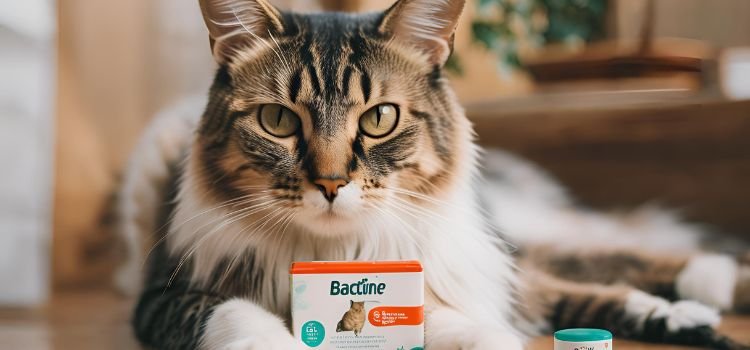
Conclusion
Using Bactine on cats requires caution and veterinary advice. Always prioritize your cat’s safety and well-being. Consult your vet before applying any medication. Safe practices ensure a healthy and happy pet. Stay informed and proactive in your cat’s healthcare. Proper care can prevent potential complications and ensure your feline friend thrives.
Frequently Asked Questions
Use diluted povidone-iodine or chlorhexidine solution for your cat. Avoid using hydrogen peroxide or alcohol. Always consult your vet before applying any antiseptic.
Clean the wound with warm water. Apply an antiseptic solution safe for cats. Use a clean bandage to cover. Consult your vet for advice.
No, you should not use Bactine on animals. It is formulated for human use. Consult a veterinarian for appropriate treatments.
Yes, Bactine can help clean and relieve pain from cat scratches. Always consult your vet before using it on pets.
Bactine is not recommended for cats. Consult a vet before using any human medications on pets.
Amazon and the Amazon logo are trademarks of Amazon.com, Inc, or its affiliates.

